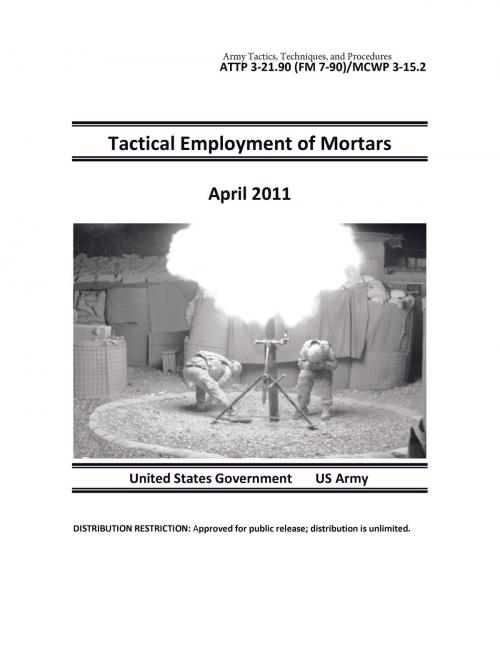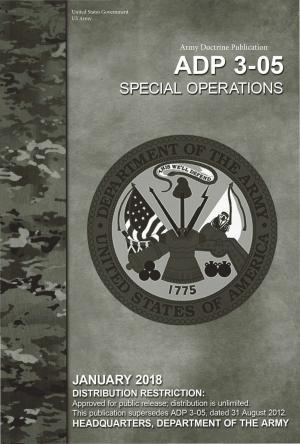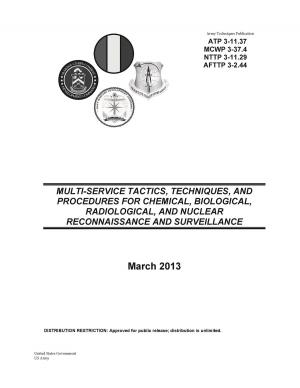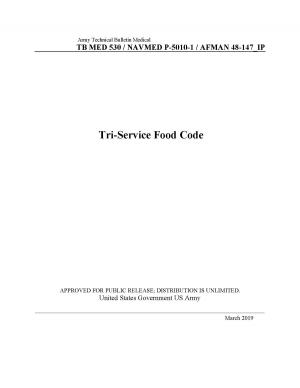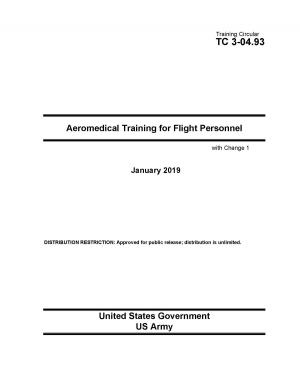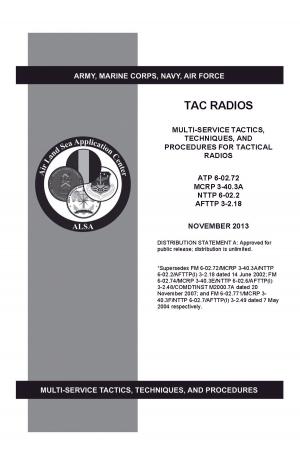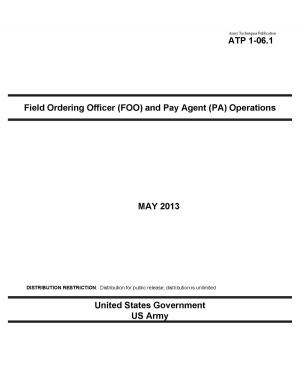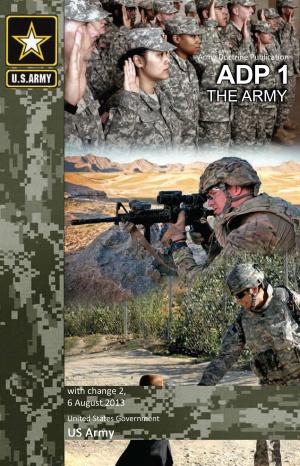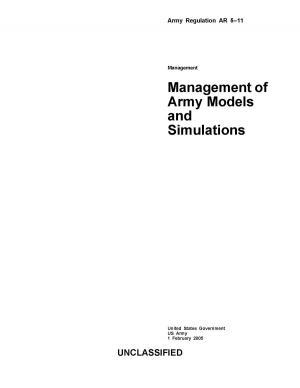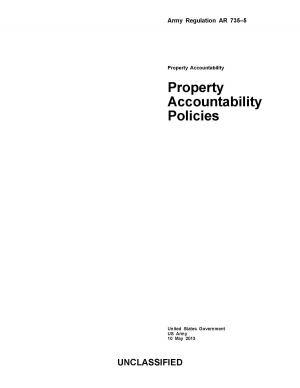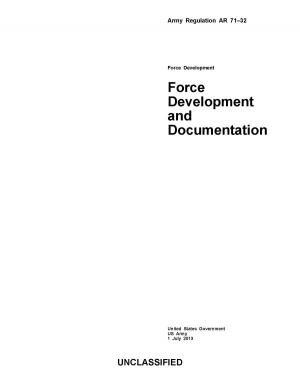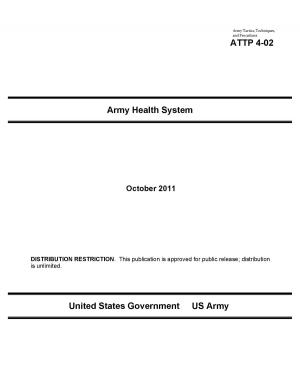Army Tactics, Techniques, and Procedures ATTP 3-21.90 (FM 7-90)/MCWP 3-15.2 Tactical Employment of Mortars April 2011
Nonfiction, Reference & Language, Study Aids, Graduate & Professional, Armed Forces, Science & Nature, Technology, Military Science, Reference, Guides & Handbooks| Author: | United States Government US Army | ISBN: | 1230000125857 |
| Publisher: | eBook Publishing Team | Publication: | April 19, 2013 |
| Imprint: | Language: | English |
| Author: | United States Government US Army |
| ISBN: | 1230000125857 |
| Publisher: | eBook Publishing Team |
| Publication: | April 19, 2013 |
| Imprint: | |
| Language: | English |
This Army and Marine Corps multiservice publication serves as doctrinal reference for the employment of mortar squads, sections, and platoons. It contains guidance on tactics and techniques that mortar units use to execute their part of combat operations described in battalion-, squadron-, troop-, and company-level manuals. This publication also contains guidance on how a mortar unit’s fires and displacement are best planned and employed to sustain a commander’s intent for fire support.
The target audience of this publication includes mortar squad, section, and platoon leaders, company and battalion commanders, battalion staff officers, and all others responsible for controlling and coordinating fire support during combined arms operations. Training developers also use this manual as a source document for combat critical tasks. Combat developers use this manual when refining and revising operational concepts for Infantry and reconnaissance mortar organizations. This publication serves as the primary reference for both resident and nonresident mortar tactical employment instruction.
This publication is not intended to be used alone. It is part of a set of doctrinal and training publications that together provide the depth and detail necessary to train and employ mortar units. Users must be familiar with appropriate company- and battalion-level maneuver manuals as well as mortar-related drills and collective tasks.
When employing mortars, Army and Marine Corps units use similar tactics and techniques. However, the differences are few at the battalion command level and below. Differences between the services’ terms and definitions are more apparent when introducing or discussing general subjects, such as warfighting functions, tactical operations, and unit organizations. Detailed explanations of these differences are beyond the scope of this manual. They are, however, identified where appropriate and different terms are combined when possible. For example, sustainment/logistics is used to identify the Army’s sustainment and the Marine Corps’ logistic functions. Readers should refer to their own service’s manuals for more detailed explanations.
Some common Army and Marine Corps terms have slightly different acronyms and, where needed, have been combined. For example, this manual uses FIST/FiST to represent a fire support team when addressing both services. Wherever possible, the use of acronyms has been minimized in this manual.
This publication applies to the Active Army, the Army National Guard (ARNG)/Army National Guard of the United States (ARNGUS), United States Army Reserve (USAR), Marine Corps, and Marine Corps Reserve unless otherwise stated.
The proponent of this publication is the United States Army Training and Doctrine Command (TRADOC). The preparing agency is the U.S. Army Maneuver Center of Excellence (MCoE).
This Army and Marine Corps multiservice publication serves as doctrinal reference for the employment of mortar squads, sections, and platoons. It contains guidance on tactics and techniques that mortar units use to execute their part of combat operations described in battalion-, squadron-, troop-, and company-level manuals. This publication also contains guidance on how a mortar unit’s fires and displacement are best planned and employed to sustain a commander’s intent for fire support.
The target audience of this publication includes mortar squad, section, and platoon leaders, company and battalion commanders, battalion staff officers, and all others responsible for controlling and coordinating fire support during combined arms operations. Training developers also use this manual as a source document for combat critical tasks. Combat developers use this manual when refining and revising operational concepts for Infantry and reconnaissance mortar organizations. This publication serves as the primary reference for both resident and nonresident mortar tactical employment instruction.
This publication is not intended to be used alone. It is part of a set of doctrinal and training publications that together provide the depth and detail necessary to train and employ mortar units. Users must be familiar with appropriate company- and battalion-level maneuver manuals as well as mortar-related drills and collective tasks.
When employing mortars, Army and Marine Corps units use similar tactics and techniques. However, the differences are few at the battalion command level and below. Differences between the services’ terms and definitions are more apparent when introducing or discussing general subjects, such as warfighting functions, tactical operations, and unit organizations. Detailed explanations of these differences are beyond the scope of this manual. They are, however, identified where appropriate and different terms are combined when possible. For example, sustainment/logistics is used to identify the Army’s sustainment and the Marine Corps’ logistic functions. Readers should refer to their own service’s manuals for more detailed explanations.
Some common Army and Marine Corps terms have slightly different acronyms and, where needed, have been combined. For example, this manual uses FIST/FiST to represent a fire support team when addressing both services. Wherever possible, the use of acronyms has been minimized in this manual.
This publication applies to the Active Army, the Army National Guard (ARNG)/Army National Guard of the United States (ARNGUS), United States Army Reserve (USAR), Marine Corps, and Marine Corps Reserve unless otherwise stated.
The proponent of this publication is the United States Army Training and Doctrine Command (TRADOC). The preparing agency is the U.S. Army Maneuver Center of Excellence (MCoE).
